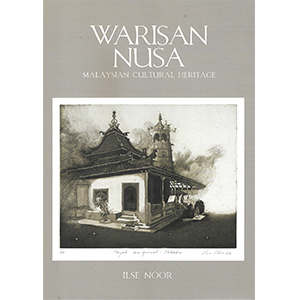Discovering Vietnam’s Ancient Capital: The Archaeology and History of the Imperial Citadel of Thăng Long–Hanoi
As Vietnam entered the 21st century it began to prepare for the 1000th anniversary of the founding of its capital Thăng Long, now Hanoi. In the heart of the city, a rescue excavation was launched on land earmarked for the construction of a new National Assembly building. Archaeologists unearthed thirteen centuries of vestiges of the ancient city of Thăng Long, yielding a richer record than anyone had dared to hope for. Construction plans were shelved, excavations widened, and at the city’ s millennial celebrations in 2010, UNESCO announced its inscription of the Imperial Citadel of Thăng Long on its World Heritage List.
This archaeological discovery has two histories. The first, told here by the archaeologists involved, is the story of the dig, as their trowels brought to light the bricks, tiles, pillars, sculptures and ceramics of countless ancient temples and palaces. The second is the history of the citadel itself, in its early years as an outpost of the Chinese empire, in its heyday as the Forbidden City of Vietnam’s emperors, and in its downgrading and eventual destruction at the hands of the Nguyen dynasty and French colonial rulers. The book presents a historical narrative of the continuous development of a regional political centre on this site. Bringing together history, archaeology and a fascinating interplay of influences from China and Southeast Asia, this is also the story of an Asian capital city coming to understand its history, and deciding how to preserve its archaeological remains.
‘Even those who are familiar with Hanoi will find this book encaptivating, refreshing, personal, and filled with juicy details.’ – Tana Li, The Australian National University
RM119.00
Out of stock
Description
As Vietnam entered the 21st century it began to prepare for the 1000th anniversary of the founding of its capital Thăng Long, now Hanoi. In the heart of the city, a rescue excavation was launched on land earmarked for the construction of a new National Assembly building. Archaeologists unearthed thirteen centuries of vestiges of the ancient city of Thăng Long, yielding a richer record than anyone had dared to hope for. Construction plans were shelved, excavations widened, and at the city’ s millennial celebrations in 2010, UNESCO announced its inscription of the Imperial Citadel of Thăng Long on its World Heritage List.
This archaeological discovery has two histories. The first, told here by the archaeologists involved, is the story of the dig, as their trowels brought to light the bricks, tiles, pillars, sculptures and ceramics of countless ancient temples and palaces. The second is the history of the citadel itself, in its early years as an outpost of the Chinese empire, in its heyday as the Forbidden City of Vietnam’s emperors, and in its downgrading and eventual destruction at the hands of the Nguyen dynasty and French colonial rulers. The book presents a historical narrative of the continuous development of a regional political centre on this site. Bringing together history, archaeology and a fascinating interplay of influences from China and Southeast Asia, this is also the story of an Asian capital city coming to understand its history, and deciding how to preserve its archaeological remains.
‘Even those who are familiar with Hanoi will find this book encaptivating, refreshing, personal, and filled with juicy details.’ – Tana Li, The Australian National University
Publisher : NUS Press
Paperback
2024
ISBN: 9789813252295

 Dancing The Malaysian
Dancing The Malaysian
 Warisan Nusa: Malaysian Cultural Heritage
Warisan Nusa: Malaysian Cultural Heritage
 Changing My Mind: Occasional Essays
Changing My Mind: Occasional Essays
 Mapping the Middle East
Mapping the Middle East
 The Naive and The Sentimental Novelist: Understanding What Happens When We Write and Read Novels
The Naive and The Sentimental Novelist: Understanding What Happens When We Write and Read Novels
 The Elections Bullshit
The Elections Bullshit





